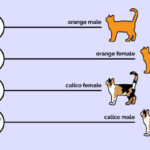Hollywood’s history is paved with misinterpretations, often learning the wrong lessons from box office hits. Consider Barbie: a critical and commercial darling lauded for its clever direction, stellar performances, and imaginative design. Its success, however, led some studios to believe audiences crave films based on every toy imaginable, overlooking the crucial element of creative talent behind Barbie‘s triumph. This myopic approach echoes past mistakes, notably the short-lived live-action Dr. Seuss era of the early 2000s, spearheaded by the infamous The Cat in the Hat. This Live Action Cat In The Hat film, rather than replicating the success of its predecessor, became a cautionary tale.
Universal Pictures, riding high on the wave of How the Grinch Stole Christmas‘s financial success in 2000, assumed they had unlocked the secret to Seuss on screen. The Grinch had all the right ingredients: a celebrated director in Ron Howard, seasoned screenwriters, and Jim Carrey’s over-the-top commitment to the Grinch role. It grossed double its budget domestically and performed well internationally, a seemingly foolproof blueprint. But instead of recognizing the importance of these elements, Universal seemingly concluded that any live action cat in the hat project, simply by virtue of being Dr. Seuss, was destined for similar success.
The talent behind The Cat in the Hat simply didn’t measure up to the Grinch‘s pedigree. They entrusted the directorial reins to Bo Welch, whose prior experience was limited to television episodes. The screenwriting team was also new to feature films. While casting Mike Myers, fresh off Shrek and Austin Powers fame, seemed like a box office draw, his involvement was reportedly due to a legal obligation to producer Brian Grazer. This potentially explains accounts of Myers’ allegedly difficult behavior on set. This confluence of factors set the stage for a troubled production of this live action cat in the hat movie.
The script veered wildly off-course,injecting adult humor incongruous with the source material, including jokes about sexual innuendo. The plot, stretched thin from a children’s book of just 236 unique words, meandered aimlessly. Even the music suffered, with Randy Newman’s score reportedly scrapped in favor of a less distinguished soundtrack, further diminishing the film’s potential. The live action cat in the hat movie seemed to be losing its way at every turn.
However, amidst the chaos, some glimmers of quality emerged. Director Bo Welch’s background as a production designer for visionary directors like Tim Burton shone through in the film’s visual aspects. The sets and costumes, when not obscured by questionable CGI, displayed a whimsical charm reminiscent of Burton’s style. While Mike Myers’ performance as the Cat is widely criticized as grating, Kelly Preston and a young Dakota Fanning delivered more grounded and appealing performances, offering a brief respite from the film’s overall absurdity. Furthermore, at a concise 76 minutes excluding credits, the film doesn’t overstay its welcome. These small mercies, however, were not enough to salvage the live action cat in the hat film.
Ultimately, the most damning critique came from Audrey Geisel, Dr. Seuss’s widow. Her profound dislike for the live action cat in the hat movie led to a ban on any further live-action adaptations of Dr. Seuss’s works during her lifetime. This effectively shut down any potential for a Seuss cinematic universe in live-action, a direct consequence of this film’s failure to capture the spirit of the source material.
Ironically, The Cat in the Hat wasn’t a complete financial disaster. Despite a hefty $109 million budget, it slightly surpassed that at the box office, primarily driven by domestic earnings. However, factoring in marketing and distribution costs, it hardly constituted a success. This middling performance, not a resounding flop nor a hit, perpetuated Hollywood’s cycle of misinterpreting audience reception. The live action cat in the hat movie became a case study in how not to adapt beloved children’s literature.
But perhaps there’s a valuable takeaway in this cinematic misstep. For those outside studio boardrooms, concerned with artistic merit rather than profit margins, The Cat in the Hat‘s spectacular failure is arguably more compelling than if it had been merely adequate. A competent but forgettable live action cat in the hat film would have been quickly dismissed. Instead, we have a fascinatingly flawed film, ripe for analysis and discussion. It serves as a potent reminder that simply adapting beloved intellectual property is no guarantee of success, and that creative vision and talent are paramount, even when bringing a seemingly simple children’s book to life. In the pantheon of Dr. Seuss adaptations, the live action cat in the hat stands as a unique, albeit chaotic, entry.

